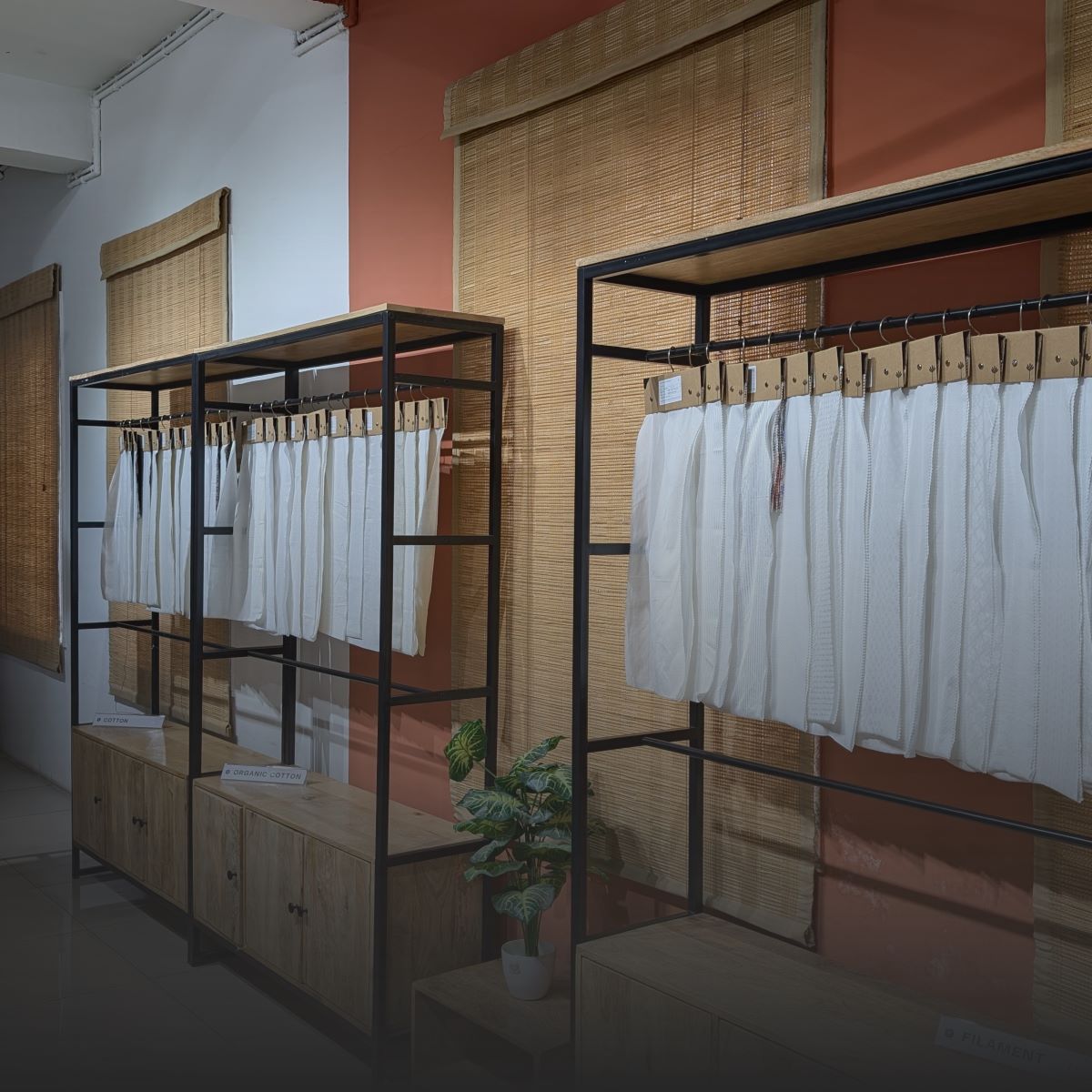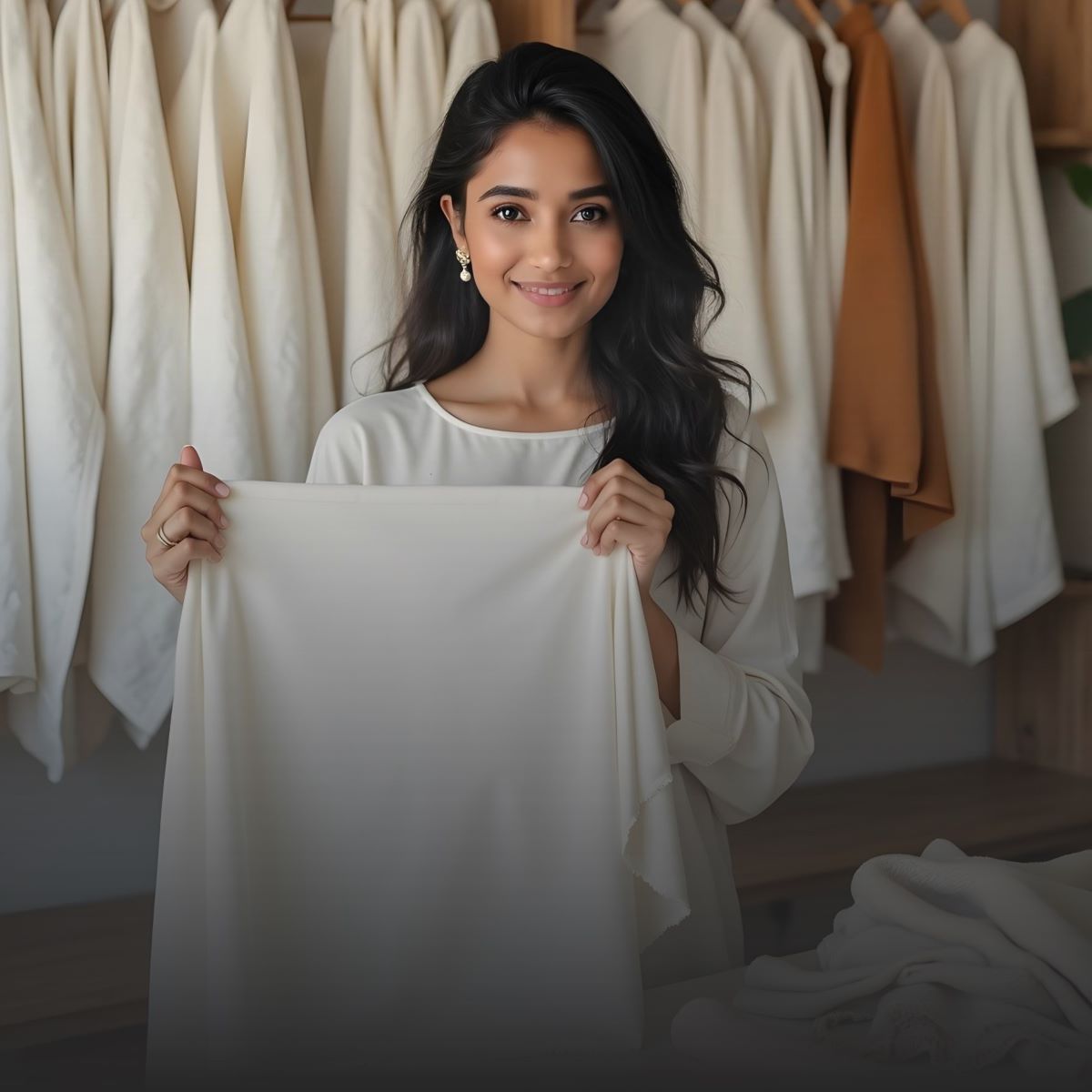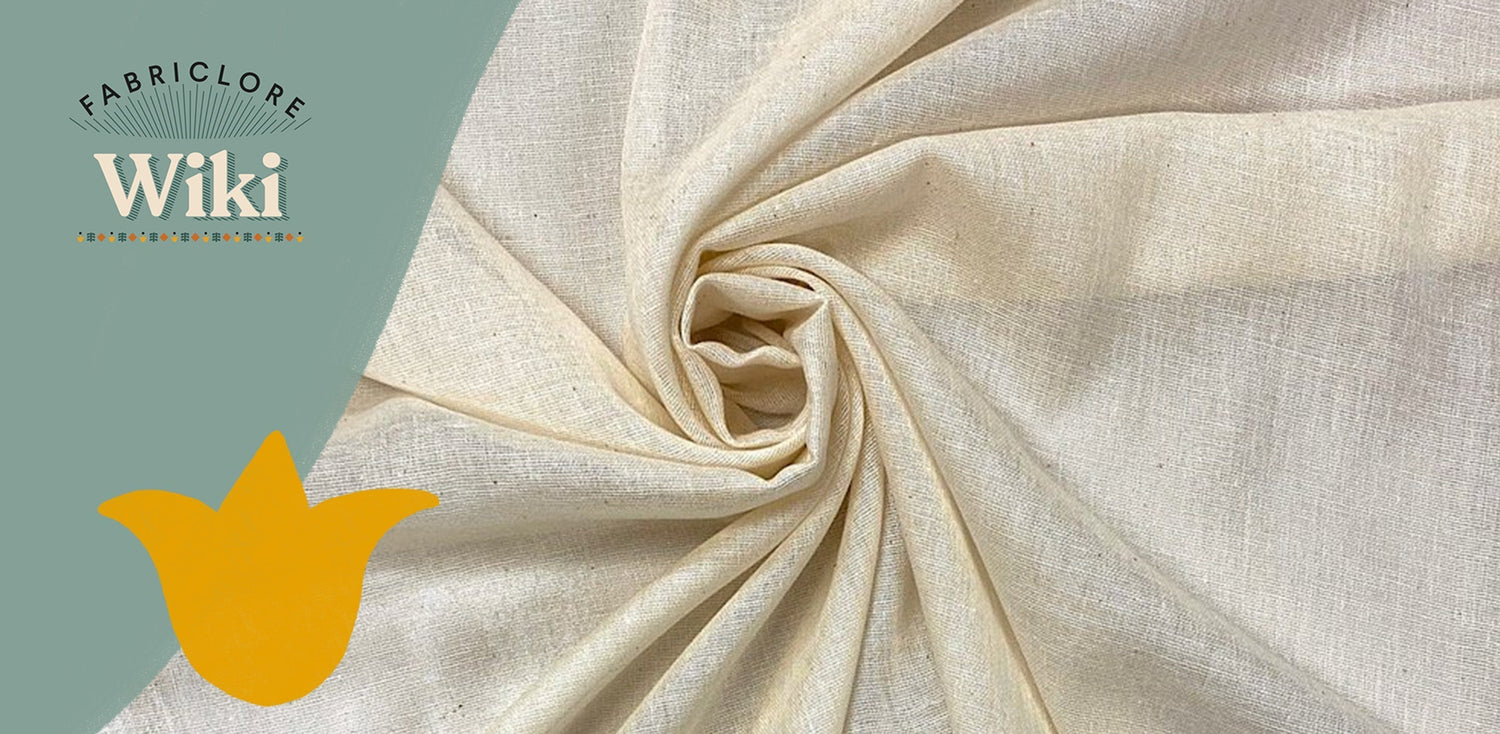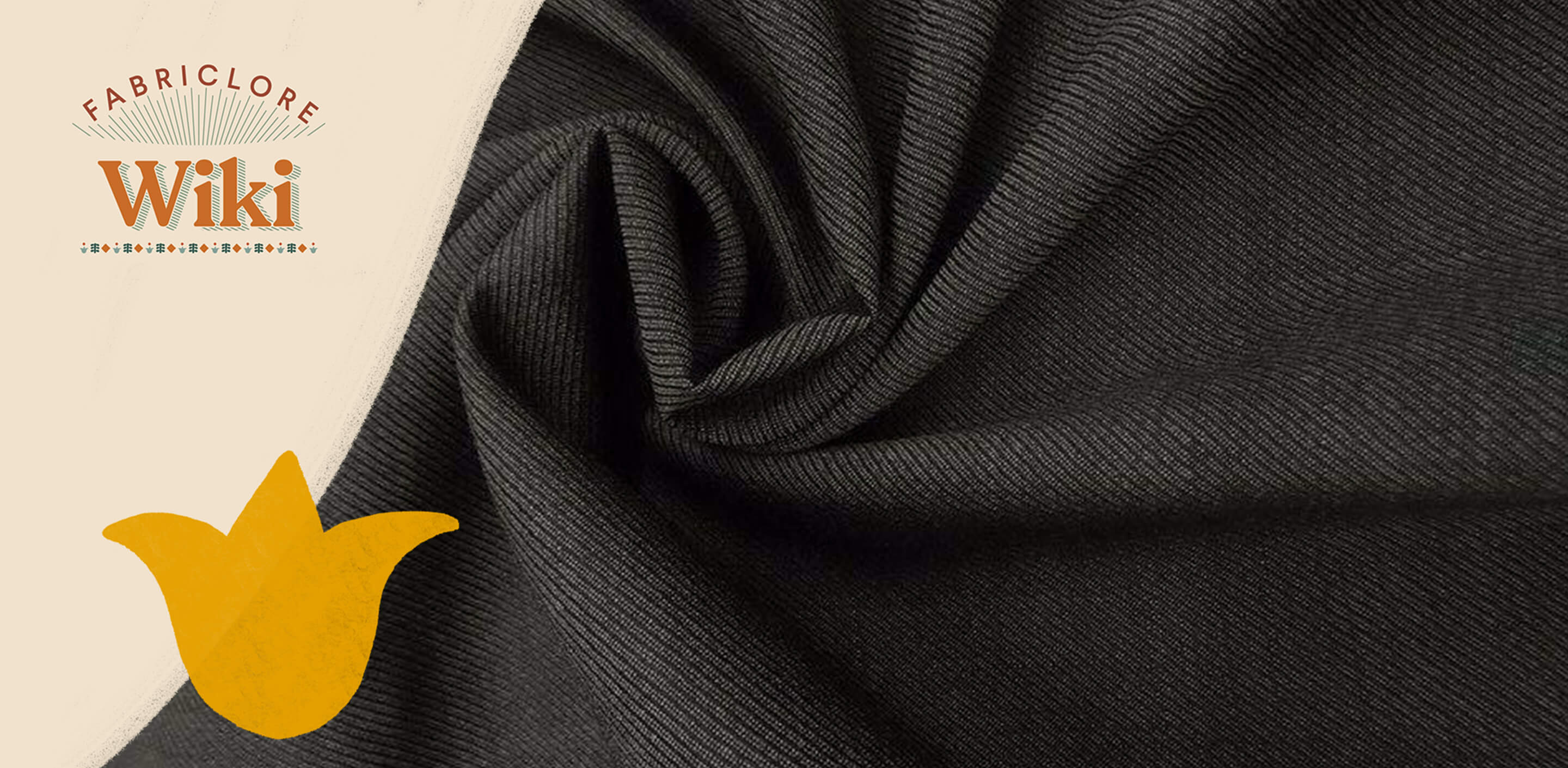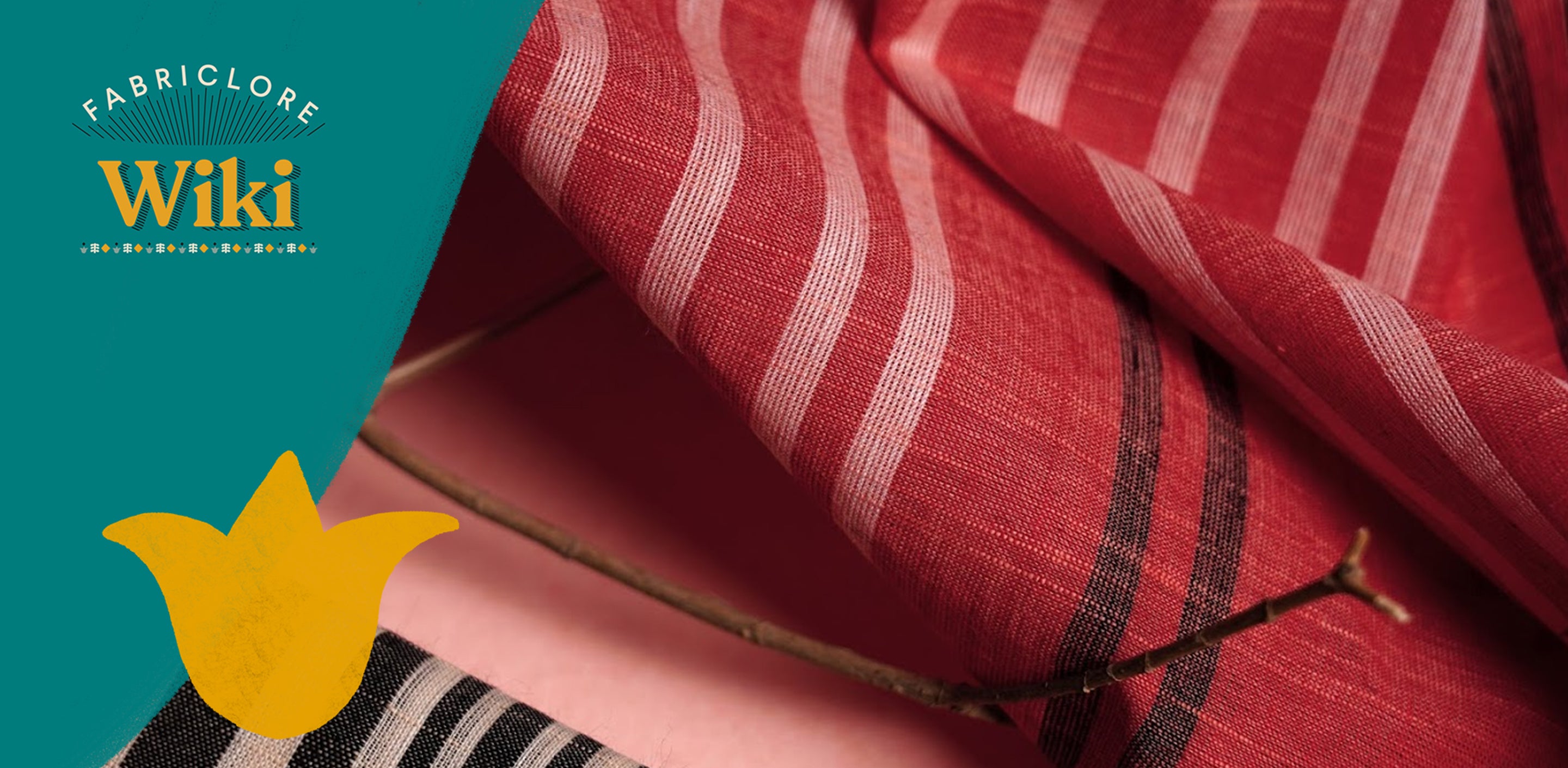Introduction to Greige Fabric
- Greige fabric is a natural, unbleached material made from fibers like cotton, linen and hemp.
- It comes straight from the loom or knitting machine without any bleaching, dyeing or finishing, keeping its raw and organic feel.
- This makes it a versatile and affordable choice for clothing, home textiles and other products.
- Its natural state also makes it popular in the fashion industry for its soft texture and eco-friendly appeal.
History of Greige Fabric

- The word "greige" comes from French and Italian words meaning raw or gray, originally referring to unfinished silk.
- Some say it’s a mix of "gray" and "beige."
- It has always been an important part of fabric production, allowing for customization and sustainable manufacturing.
What is Greige Fabric?

- Greige is a term that refers to a cloth that has not been bleached or colored and may either be knitted or woven.
- At their most basic level, you could say that these textiles are in their natural or unfinished state.
- Before dying and printing, gray materials are scrubbed and occasionally bleached (to make them lose their original color).
- Products labeled as "greige" are tainted with a wide variety of contaminants.
Modern Innovations in Greige Fabric
- The greige fabric industry is changing with new technology and eco-friendly methods.
- Automated systems and smart machines are making fabric production faster and more precise, improving quality.
- Manufacturers are using organic fibers and energy-saving processes to reduce environmental impact.
- As consumer needs change, the industry continues to innovate, offering better customization options and pre-treated fabrics with unique textures.
- Modern weaving machines improve efficiency, making greige fabric a more sustainable and high-quality choice for the future.
What Makes Greige Fabric Special?

- Greige fabric is special because it can be easily customized since it hasn't been treated yet, allowing manufacturers to adjust it to different needs.
- It's also more affordable than fabrics that have been processed.
- Its natural, rustic look is popular in sustainable fashion and home textiles, making it a great choice for eco-friendly products.
Appearance of Greige Fabric
- The look of greige fabric can change based on the type of fiber, weave and weight.
- Greige fabric made from cotton and polyester is usually off-white or beige, while synthetic fibers like polyester are often whiter.
- The natural color of greige fabric is typically removed through additional processes like bleaching, dyeing or finishing.
Types of Greige Fabric:
|
Type of Greige Fabric |
Description |
|
Cotton Greige Fabric |
Soft, breathable and widely used in apparel and home textiles. |
|
Polyester Greige Fabric |
Strong, wrinkle-resistant and ideal for industrial applications. |
|
Blended Greige Fabric |
A combination of fibers (e.g., cotton-polyester blends) to balance durability and comfort. |
Advantages of Greige Fabric
- Greige fabric is easy to customize because it can be dyed, printed or treated to fit different needs.
- It is also cost-effective, being cheaper than fabrics that are already finished, making it a popular choice for large-scale production.
- Plus, it has eco-friendly potential, as it can be made with less environmental impact if produced sustainably.
Disadvantages of Greige Fabric
- Greige fabric doesn’t have color or a finished look, so it needs extra processing before it can be used in most products.
- It may also have impurities like natural oils or residues that need to be cleaned off.
- Because of this, it can't be used directly by consumers without further treatment.
Sustainability and Environmental Impact of Greige Fabric

- Greige fabric is important for sustainable fashion and eco-friendly manufacturing.
- By skipping the bleaching and dyeing process, it helps cut down on harmful chemicals.
- Using eco-friendly finishing methods also boosts its environmental benefits.
- Plus, greige fabrics made from natural fibers are more biodegradable, breaking down easily and helping to reduce landfill waste.
Care and Maintenance Tips for Greige Fabric
- Before using greige fabric, it should be pre-washed to remove natural impurities and get it ready for further treatment.
- It’s important to clean it gently with mild detergents to keep the fabric in good condition.
- The fabric should be stored in a dry, cool place to avoid mildew or damage.
The Role of Greige Fabric in Fashion and Design:
|
Application |
Description |
|
Fashion Industry |
Designers prefer greige fabric for its versatility, allowing them to apply custom dyes and finishes. |
|
Home Textiles |
Used in upholstery, curtains and bedding, providing an adaptable base material. |
|
Eco-Friendly Design |
Sustainable brands embrace greige fabric for its minimal environmental impact. |
Manufacturing Process of Greige Fabric:
|
Step |
Description |
|
Fiber Selection |
Choosing the right raw material (e.g., cotton, polyester or blends). |
|
Spinning |
Converting raw fibers into yarns. |
|
Weaving or Knitting |
Forming the fabric using different textile construction techniques. |
|
Inspection |
Ensuring the fabric meets quality standards before finishing. |
Greige Fabric vs. Finished Fabrics:
|
Feature |
Greige Fabric |
Finished Fabric |
|
Processing Level |
Unfinished |
Fully processed |
|
Customization |
High potential |
Limited post-production |
|
Cost |
Lower |
Higher due to finishing |
|
Eco-Friendliness |
More sustainable |
Can involve chemicals |
Where to Buy Greige Fabric?
- Wholesale Suppliers: Large textile manufacturers provide bulk greige fabric for customization.
- Online Fabric Stores: Platforms like Fabriclore offer a variety of greige fabric options with customization services.
- Local Textile Markets: Many regions have fabric markets where raw greige fabric is sold.
Greige Fabric Weights
- The weight of greige fabric depends on its construction, including thread count and yarn size.
- Thread count is the number of threads in one square inch, while yarn size shows that a higher number means finer yarn and a lower number means thicker yarn.
- The greige fabric typically weighs between 4.5 and 15 ounces per square yard.
- Fabrics closer to 15 ounces are heavier and feel like canvas, while fabrics around 4.5 ounces are lighter and more airy.
- The weight is measured in ounces per square yard.
Conclusion
Greige fabric is an important part of the textile industry because it is a raw, unfinished material that can be easily customized. It is affordable, flexible and eco-friendly, which makes it a popular choice for fashion designers, home textile manufacturers and brands focused on sustainability. Greige fabric comes in different types, such as cotton, polyester, and blends, allowing industries to use it for dyeing, printing or other special finishes.
As more people focus on sustainability, greige fabric stands out because it has a lower environmental impact. It’s a great choice for designers and businesses who want to be eco-friendly. By using greige fabric, you can reduce the use of chemicals, save money and have more control over the final look and feel of the product.
Where to Buy High-Quality Greige Fabric?
If you want to buy premium greige fabric, Fabriclore offers a wide selection of high-quality, customizable options with low minimum order quantities. Whether you need fabric for clothing, home textiles or other uses, their collection provides excellent quality and sustainability.
Check out the greige fabric collection now. Contact Fabriclore for wholesale orders and customization options.
Shop Greige Fabric at Fabriclore
FAQs
What is Greige Cloth?
Greige cloth is fabric that has been woven or knitted but is still in its raw form. It hasn't been dyed, bleached, or printed yet and usually has a natural color like off-white, beige or gray. It's used as a starting point for making custom fabrics.
What is the Difference Between Grey and Greige Fabric?
The difference between "grey" and "greige" fabric is mainly in color and processing. "Grey" fabric is woven but hasn't been treated (like bleaching or dyeing) and it often looks gray because of the natural fibers. "Greige" fabric is also untreated but can be beige, off-white or gray, depending on the fibers.
What is the Difference Between Greige and RFD Fabric?
Greige fabric is raw and unfinished, while RFD (Ready for Dyeing) fabric is a type of greige fabric that’s been lightly treated to be ready for dyeing. RFD fabric is cleaner and absorbs dye better than regular greige fabric.
What are Greige Yarns?
Greige yarns are made from raw fibers and haven't been dyed or treated yet. These yarns are used to make greige fabric, which will later be dyed, printed or finished to create final products.
We also happen to be a magnet for suggestions, and would love to catch yours….throw us yours on hello@fabriclore.com
